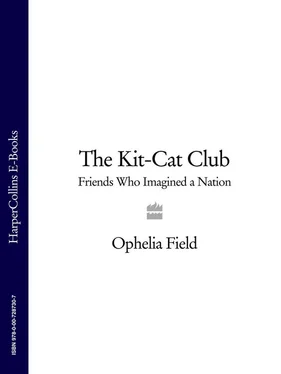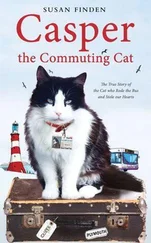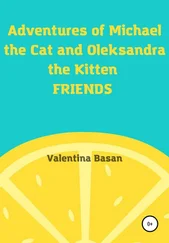Ironically, the practical result of Addison's reticence when at a Kit-cat Club dinner was that he had to get quickly drunk to relax. Addison was especially fond of Canary wine and ‘Barbadoes water’ (an alcoholic cordial flavoured with citrus), 30 and Steele was almost certainly thinking of Addison when he described a friend whom you could seldom get into a tavern, but ‘once he is arrived to his pint and begins to look about and like his company, you admire a thousand things in him which before lay buried’. 31
The amount usually drunk at the Kit-Cat Club is disputed. One contemporary said they ‘refresh themselves with a glass of wine, but with great moderation’. 32 Individual members' household alcohol bills, however, suggest that they were often well soaked, 33 and a Tory poet described the Club as inspired by intoxication: ‘Oft do they in high Flights and Raptures swell, / Drunk with the Waters of our Jacob's Well.’ 34
Vanbrugh's personal punch recipe also suggests that there were some lethally strong cocktails besides the wine on offer at the Club: ‘water or small beer; mead, port—two glasses each; rum, saffron—a very little of each; nutmeg, poker [i.e. warmed by inserting a hot poker], orange or lemon peel in winter; balm etc in summer’. 35
Addison's travel book on Italy had reviewed the wine in every place he visited, and this wine connoisseurship was something he shared with other Kit-Cat members. In 1704, when Congreve noted ‘Good wine scarcer than ever’, 36 Addison joined the Kit-Cat Club partly because it was one of the few places where one would have been served the finest, lighter French wines. Imports of French wine were heavily taxed during the war, and though the Kit-Cat lords and MPs supported this protectionism in Parliament, they privately made full use of the privilege allowed to the Privy Counsellors among them to import large quantities of duty-free wine. In 1706, Congreve complained London ‘affords not one drop of wine out of a private house’. 37 His distinction between what they were drinking in public and private is telling.
Since the Methuen Treaty of 1703, Portuguese wine could be imported at a third less duty than French. Port was ‘patriotic and Whig and woollen; claret was Francophile and Jacobite’. 38 Kit-Cat Anthony Henley quipped that the Tories were unpatriotic because ‘they are for bringing in French claret and will not sup-Port’. 39 Among the Whigs, champagne and claret became truly guilty pleasures, and much black-market French wine was labelled as port to get it through customs. Between 1705 and 1714, Congreve was one of five Commissioners for licensing wine, which, combined with his job at the Customs House, placed him perfectly—alongside Maynwaring—to assist his patrons with defrauding the system.
In the early 1700s, when heavy drinking had not yet exploded into the epidemic depicted in Hogarth's ‘Gin Lane’ but rather remained the preserve of the upper classes (as in the phrase ‘drunk as a lord’), alcoholism was not regarded as a serious issue. Even the Collierites and Societies for the Reformation of Manners never focused on temperance. However, Addison, self-critical of what he must have known was a personal weakness, lectured young men never to boast of drunkenness, since it distorts the intelligence and ‘displays every little Spot of the Soul in its utmost Deformity’. 40 He published an essay advising his readers to drink as follows: ‘the first Glass for myself, the second for my Friends, the third for good Humour and the fourth for mine Enemies’. 41 One reader, possibly a teasing friend, commented that ‘there was certainly an Error in the Print, and that the Word Glass should be Bottle ‘. 42
Addison was far more abstemious about food than alcohol, having too delicate a digestion for the richer dishes at the Kit-Cat feasts. The Kit-Cat Club remained a dining club, even as it assumed its range of other identities as cultural institution, literary clique and political think-tank. It was imitated as a dining and toasting club by the ‘Beefsteak Club’, another Whig club that started sometime before 1705. 43 But, though many Kit-Cats were dedicated food lovers, only one member's admission rested primarily on his reputation as a gourmand. Charles Dartiquenave (or ‘Dartineuf’), known to his friends as ‘Darty’, was a member when Addison joined. Darty was rumoured to be a bastard son of Charles II, but in fact his father was a Huguenot refugee. Darty had written a volume of poems in Greek and Latin while a boy, and as an adult became known as a great punster. He was appointed an Agent of Taxes in 1706 and later Paymaster of the Royal Works, being described by one contemporary as ‘the man that knows everything and that everybody knows’. 44 Anecdotes about Darty, however, focused on only one thing: his obsessive love of food. 45 Pope wrote an epigram: ‘Each mortal has his pleasure: none deny / Scarsdale his bottle, Darty his Ham Pie.’ 46
It is unsurprising that a man who became known as ‘a most celebrated sensualist and glutton’ 47 should have sought admission to a club founded upon pie-eating.
Addison's indifference to good food was shown by Edward Wortley Montagu's explicit refusal to share lodgings with Addison unless he hired a better cook. In a famous essay on the ‘Gluttony of a modern Meal’, Addison imagined each rich dish on the table as a dish of gout, dropsy or fever. Addison said his prescriptive diet would be one dish per meal, with simple sauces—closer to our modern norm. He recommended that if one must eat a large dinner, one should balance it with some days of abstinence.
Addison's arrival coincided with the Kit-Cat Club's move after 1704 to Barn Elms, where there was fresher produce to enjoy besides the stodgy pies. Following a summer visit to the property, Vanbrugh told Tonson there were a ‘hundred thousand apricocks [ sic ]’ in the orchards, along with strawberries, redcurrants ‘red as blood’, gooseberries, peaches, pears, apples and plums sufficient ‘to gripe the guts of a nation’. 48 Addison would later take great pride in his own kitchen garden, full of cabbages, ‘coleworts’ (half-grown cabbages) and herbs, 49 so he would have taken a keen interest in Tonson's kitchen garden and orchards at Barn Elms, but more as a gardener than gourmand.
A Swiss visitor in 1719 observed many people in England ‘never eat any bread, and universally they eat very little: they nibble a few crumbs, while they chew the meat by whole mouthfuls’. 50 Meat was a status food and a taste for it (in pies or as roasts) was considered manly, but people also ate more fruit and vegetables than is sometimes supposed. The Kit-Cats would have disdained Italian cookery for its relative scarcity of meat, though Carlisle—with a taste for Continental imports in food as in architecture—once ordered, from an Italian warehouse on London's Suffolk Street, ‘some choice figs’, parmesan cheese and four or five pounds of ‘French raisins’. 51 The Kit-Cat diet was, in other words, not as unvaried as one might think. Addison described a dinner conversation about gastronomic antipathies like eels and parsnips, which proceeded ‘till we had worked up ourselves to such a Pitch of Complaisance that when the Dinner was to come in, we enquired the Name of every Dish and hoped it would be no Offence to any in Company’. 52
The balancing of the Club's meat with more fruit and vegetables in the summer paralleled, symbolically, a balancing of the Club's masculinity with more ‘polite’, feminine tastes. After the Barn Elms renovations were completed, Vanbrugh, Carlisle and Garth hosted a ‘Barns Expedition’ by barge to show the house off to a party consisting of Marlborough's wife Sarah and other noble Whig ladies. And it was after the Club settled at Barn Elms (and the Fountain tavern) that the Kit-Cats added a larger dash of delicacy to their meetings with bespoke drinking glasses and decorative silverware. 53 Vanbrugh always referred to the Barn Elms house by the feminine pronoun and, in one letter to Tonson, personified it as Tonson's mistress. This was an allusion to a quip in Wycherley's play The Country Wife , 54 but also a way of countering accusations that an interest in interior design was in any way effeminate.
Читать дальше












